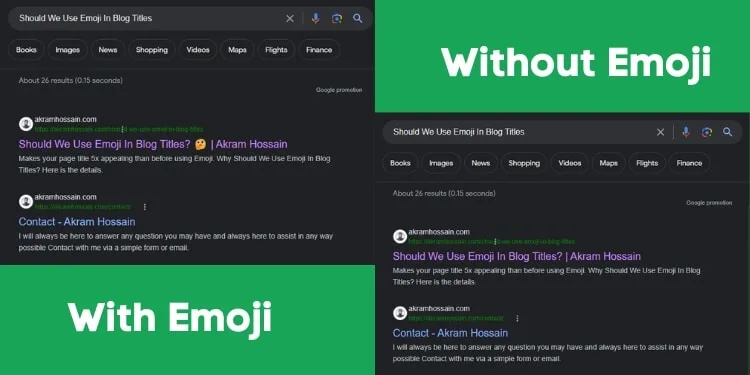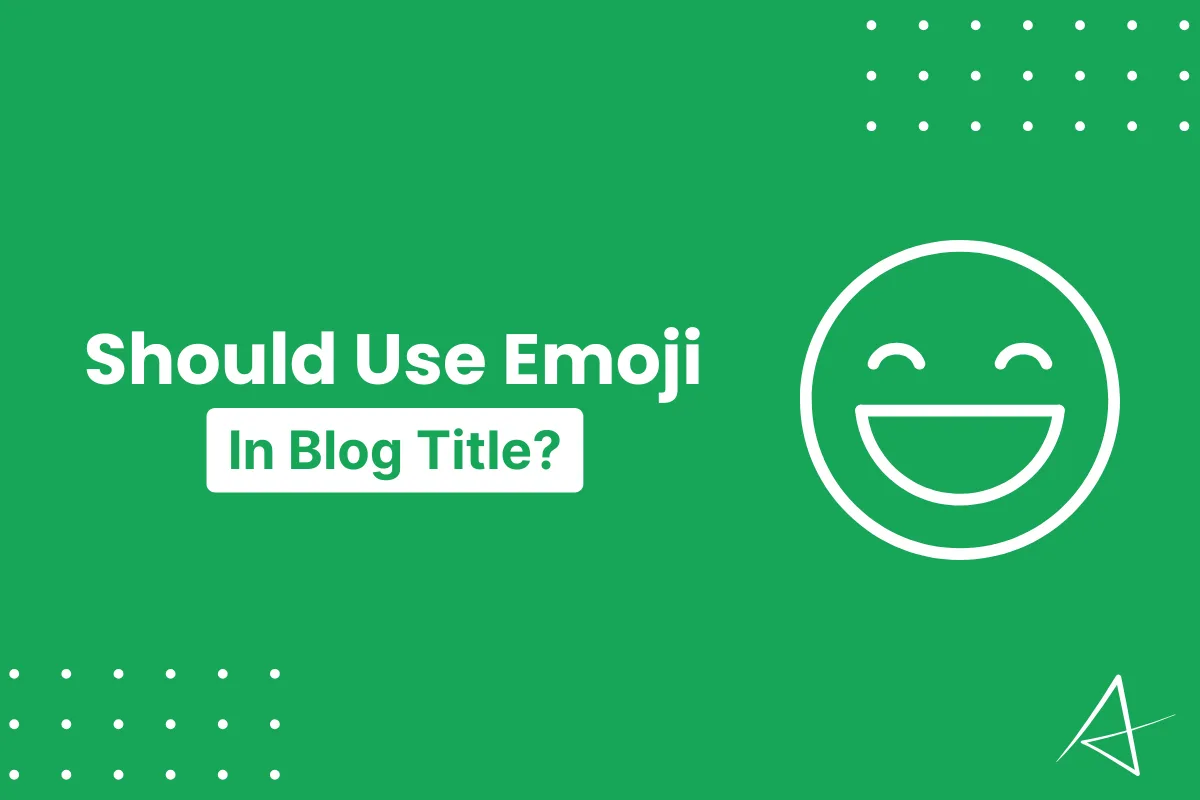After using emoji in title, we notice that, Google doens’t show the emoji in SERP. So, it’s doen’st provide any ranking or user attraction value.
Hey webmasters! Did you use emoji in your blog title? It can be yes or no.
Well, no worries, here I’ll share something you will be surprised by, and you will get a spike in your analytics.
Are you excited? I’m, too. Let’s jump into an interesting topic.
First, think logically; where do you click when you see 10 SERP (currently, you may see SGE) ranking titles?
It’s an obvious answer; you will click the first title. Right?! But here is the catch.
Look, we all are trying to execute our content planning for the top position.
What is Emoji?
An emoji is a small digital image or icon used to convey emotions, ideas, and various expressions in electronic communication.
The word “emoji” comes from the Japanese language, where “e” means picture and “moji” means character.
In social media, we deeply use meaningful emojis to express our emotions, aggression, and information.
These pictorial representations are widely used in text messages, social media posts, emails, and other forms of digital communication to enhance or replace written words with visual cues.
Use of Emojis
Emojis are often colorful and designed to be easily recognizable, allowing users to quickly convey emotions, reactions, or concepts without the need for lengthy explanations.
We all use emojis in our social media posts, emails, text messages, and everywhere we are connected digitally.
Visual imaging is a way to deliver our expression to others and the best way to define our message’s meaning deeply.
How do emojis help to express meaning?
It’s very much as simple as that, assuming you love someone and you say to him/her, “I Love You“.
It’s a common word term for everyone, but if you say “I 💖 you.” It makes sense to your loved one.
The heart sign presents your expression and emotions to him/her deeply, and he/she can easily understand the value of your love.
It’s just an example of emojis. Not only that, but you can also use thousands of emojis to share your text with impressions.
Sadness 🥲, Sorrow😔, Emotions, Happy😀, Crying 🥹and more types of Emoji you will get right from your keyboard for Windows (Home Key + .) and Mac (Control-Command-Space)
Besides, you will get a huge number of emojis bundled from your smartphone, like Android, iOS, and others.
This is a glimpse of the use of emojis, and you should explore the variation of emojis that makes your text expression realistic.
Now, these are the questions I would like to answer;
Why Should Use Emoji In Blog Titles?
You should always make your meta title different from your competitors.
You know the SERP or SGE (Search Generative Experience) initially provides 10 results, and most of the visitors click the first one.
But here is the catch: You should make your voice more appealing and effective with emojis.
What is my thought?
Commonly, you can use emojis to make a title clicky and eye-catching, but not in every title.
I want to use emojis in certain titles that can give a realistic vibe to the title and the title’s meaning.
It’s not obvious that you should use emojis in the title, but you can use it in the meta title.
Hopefully, you know the difference between a title and a meta title for a web page.
Note: Using emojis can improve your rank; this is completely wrong, and you should not rely on only emoji titles. But it can be the one way to get traffic from the search engine result page.
Here is the screenshot that makes sense for using emoji or non-emoji titles. You may see the difference between using emojis and not using emojis.

It is a mental game for your audience if you can prove that your title and content differ from others.
They will definitely click on your title, and you will get better traffic naturally with the same effort.
So, if you get more potential traffic with the same effort, is it not fine or better? I think so.
So, it’s time for A/B testing, and you shouldn’t wait for too long to test; pick a keyboard, write the proper title, and use the appropriate emoji.
You may see the difference before and after.
Why is Emoji Not Showing in SERP?
Well, it’s an important part of your content and how Google considers your content from their end.
It can be Google considered spam initially, but after some quality and topic cluster content, Google may reconsider showing the title emoji in SERP.
As I said before, it’s not an important thing that you have to use in the Title, but it’s a funny experiment. As an SEO, you should do that kind of experiment to show the difference.
Final Line
You should use emoji in the blog title once to test the result, just for casual use. Google or major search engines will not penalize you for this.
It isn’t highly recommended that you use emojis in the title, but you can try to boost your content organically, and it’s not required for the credit card.
It’s not necessary or any certified method, but I think, as a webmaster, we all need to test to use Emoji.
Emoji makes a more interesting and appealing message or text; why not in the title?






